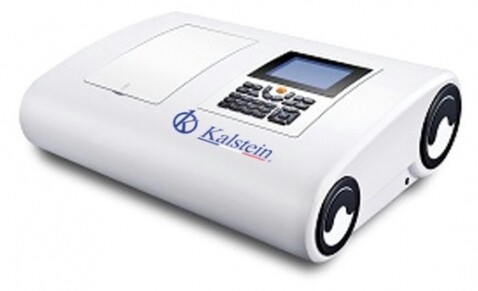A spectrophotometer is an instrument that measures how much light a substance absorbs. This equipment measures the amount of absorbance after light passes through a solution. Each substance transmits, reflects, and absorbs light slightly differently. In chemistry, spectrophotometry is the quantitative measurement of the transmission properties of a material based on the light wave.
This equipment has the ability to handle a beam of electromagnetic radiation (REM). Its efficiency, resolution, sensitivity and spectral range will depend on the design variables and the selection of the optical components that comprise it.
How does a spectrophotometer work?
The operation of this equipment is based on the light of the special lamp that it has that is guided by means of a connector that selects and separates the light from the wavelength, and then passes through a sample. of that sample is captured and compared with the intensity of the light that fell on that sample. With this information, the transmittance can be calculated, which will depend on the concentration of the substance.
Basically its operation is about illuminating a sample with light, and then calculating how much is the amount of light that is reflected through a series of wavelength intervals.
Differences between visible and UV spectrophotometry
Light has a certain amount of energy that is inversely proportional to its wavelength. That is why shorter wavelengths of light carry more energy and shorter wavelengths carry less energy.
It takes a specific amount of energy to promote the electrons in a substance to a higher energy, a state in which we can detect their absorption. Light absorption occurs for different wavelengths in different substances. Humans are able to see in the spectrum of visible light, from approximately 380 nm to 780 nm. Ultraviolet light has shorter wavelengths than visible light up to about 100 nm. Therefore, light can be described by its wavelength, it is used in spectroscopy to analyze and identify different substances, by locating the specific wavelengths corresponding to the maximum absorbance.
Therein lies the main difference between a visible and a UV spectrophotometer, since the former measure the absorption of electromagnetic radiation comprised in a spectral range of 400 to 800 nm, while the latter work in the range of 200 to 400 nm.
Uses of Visible and UV Spectrophotometers
These equipments are used in many areas to measure certain ingredients in an analysts determine concentration, evaluate enzymatic activity, can measure bacterial growth, DNA, RNA and protein analysis.
At Kalstein we are MANUFACTURERS of medical and laboratory equipment, and we offer you the most innovative spectrophotometers, designed with the best technology and at the best PRICES on the market. That is why we invite you to take a look HERE

